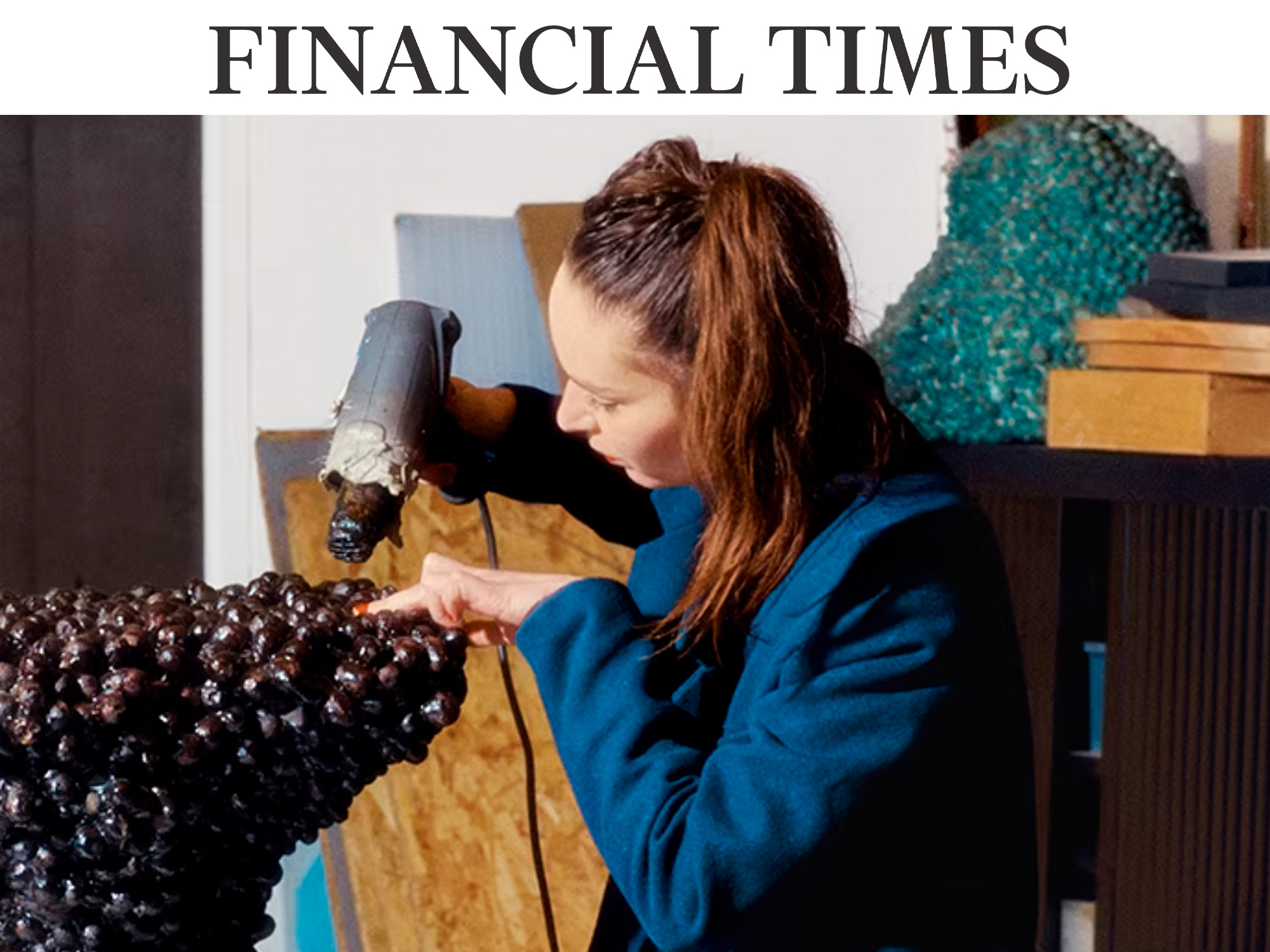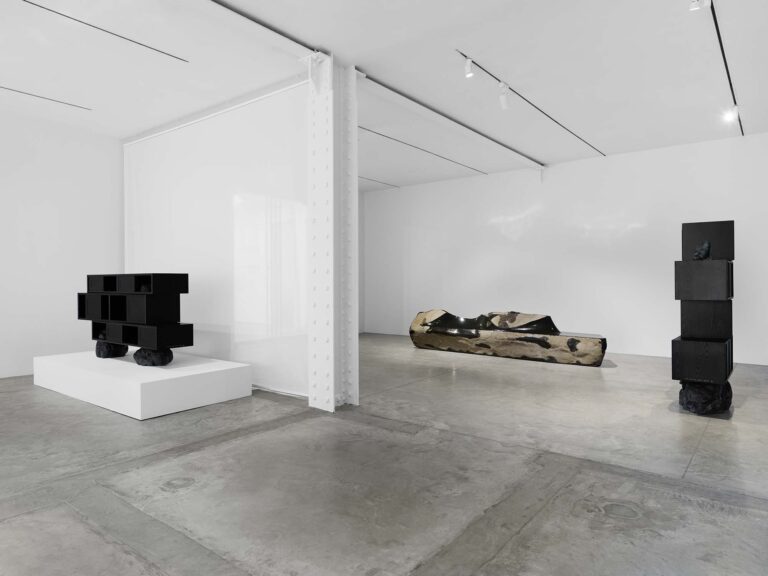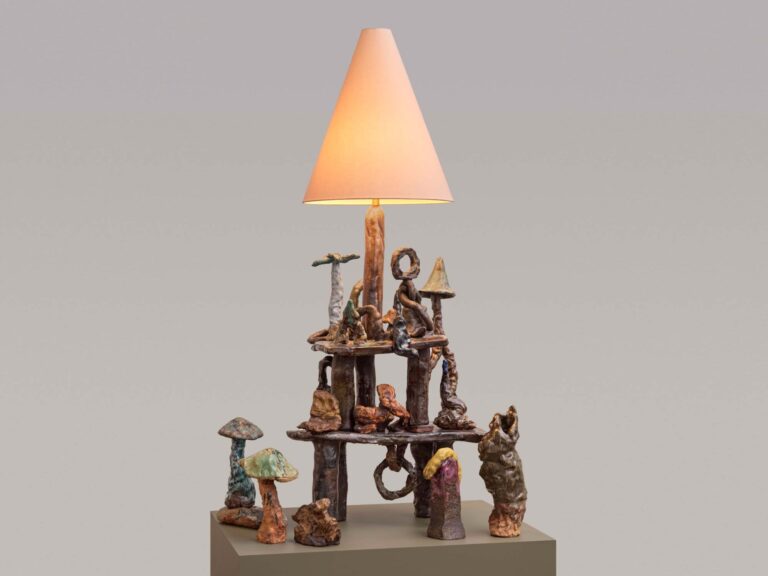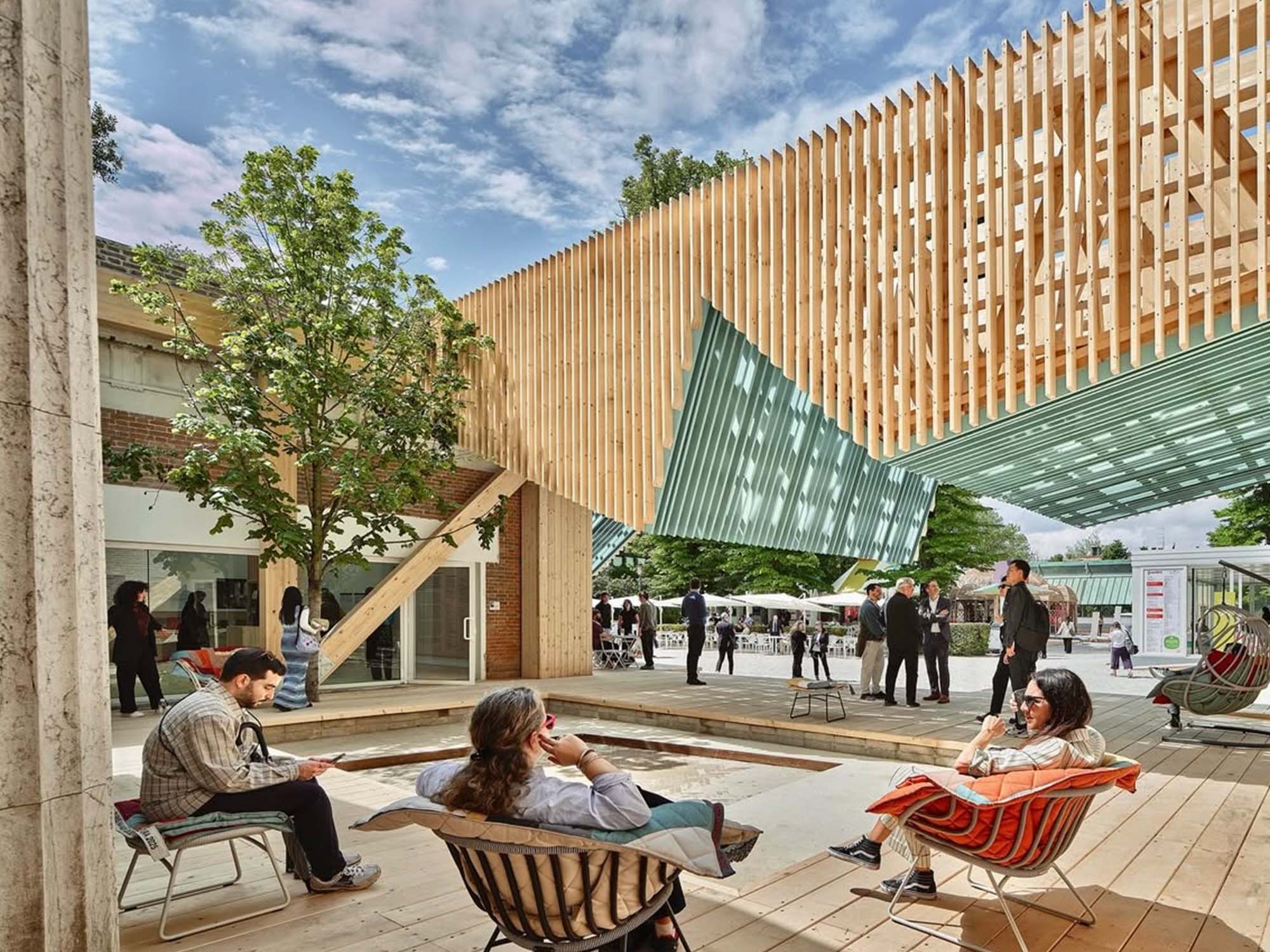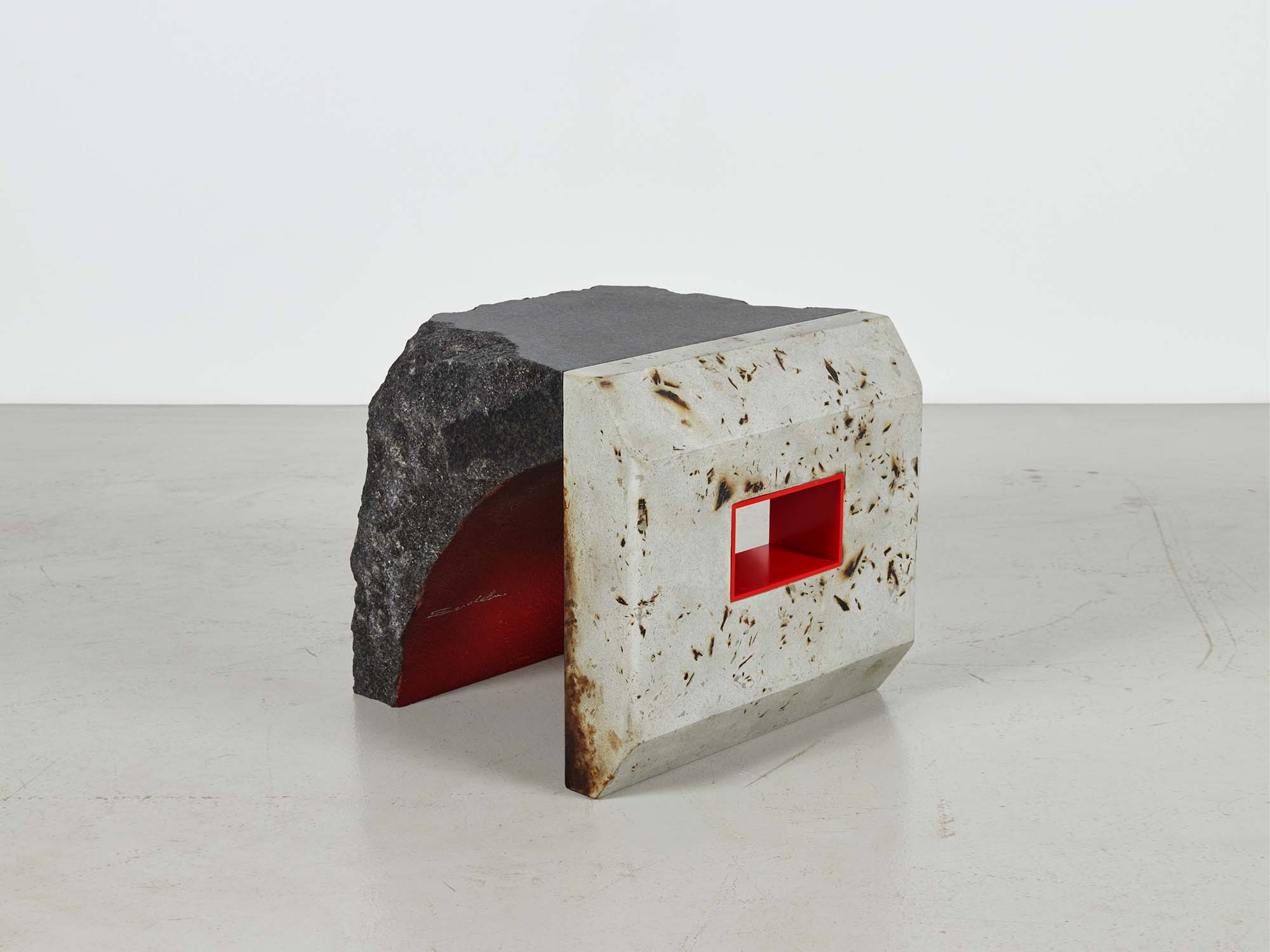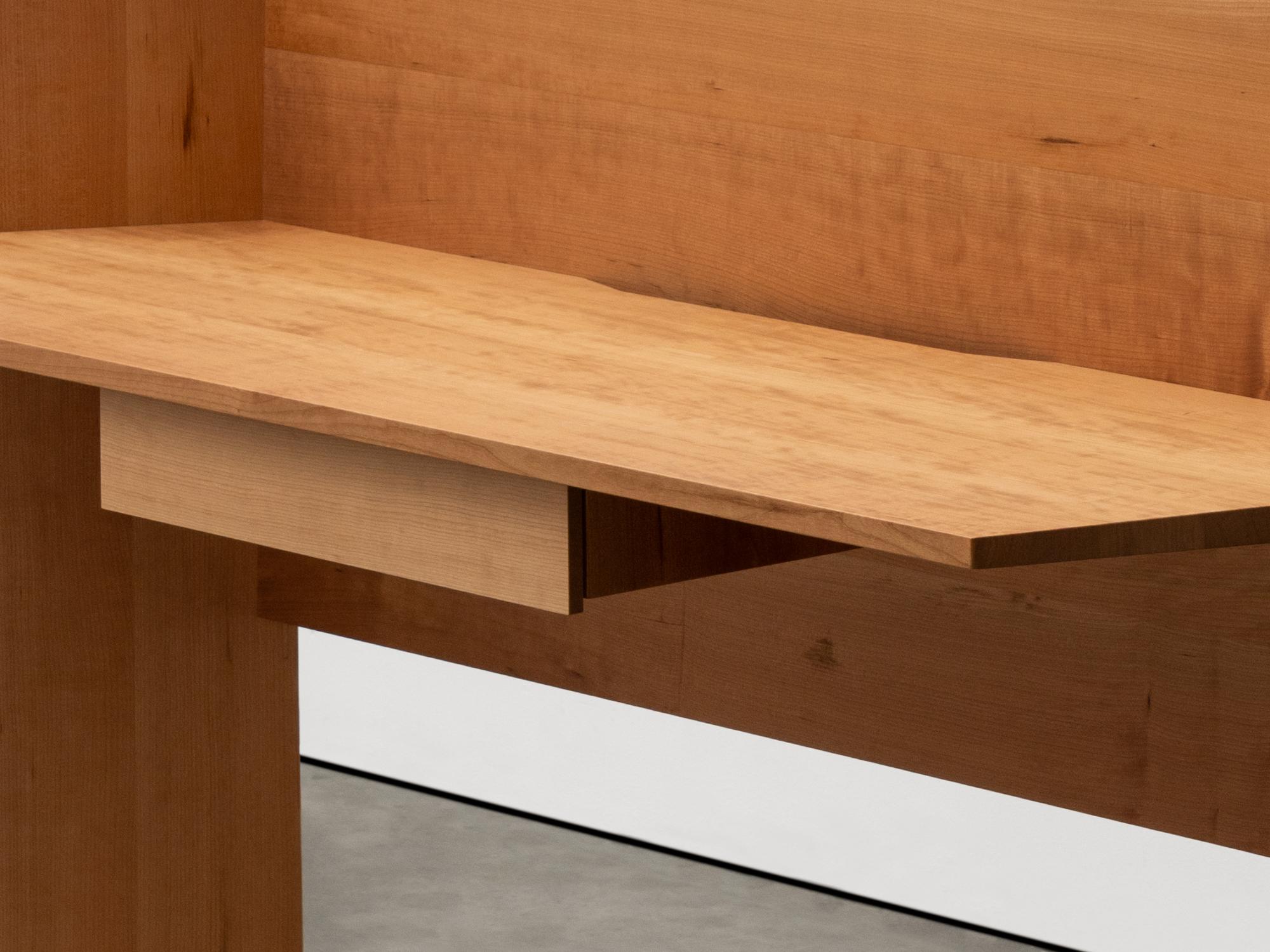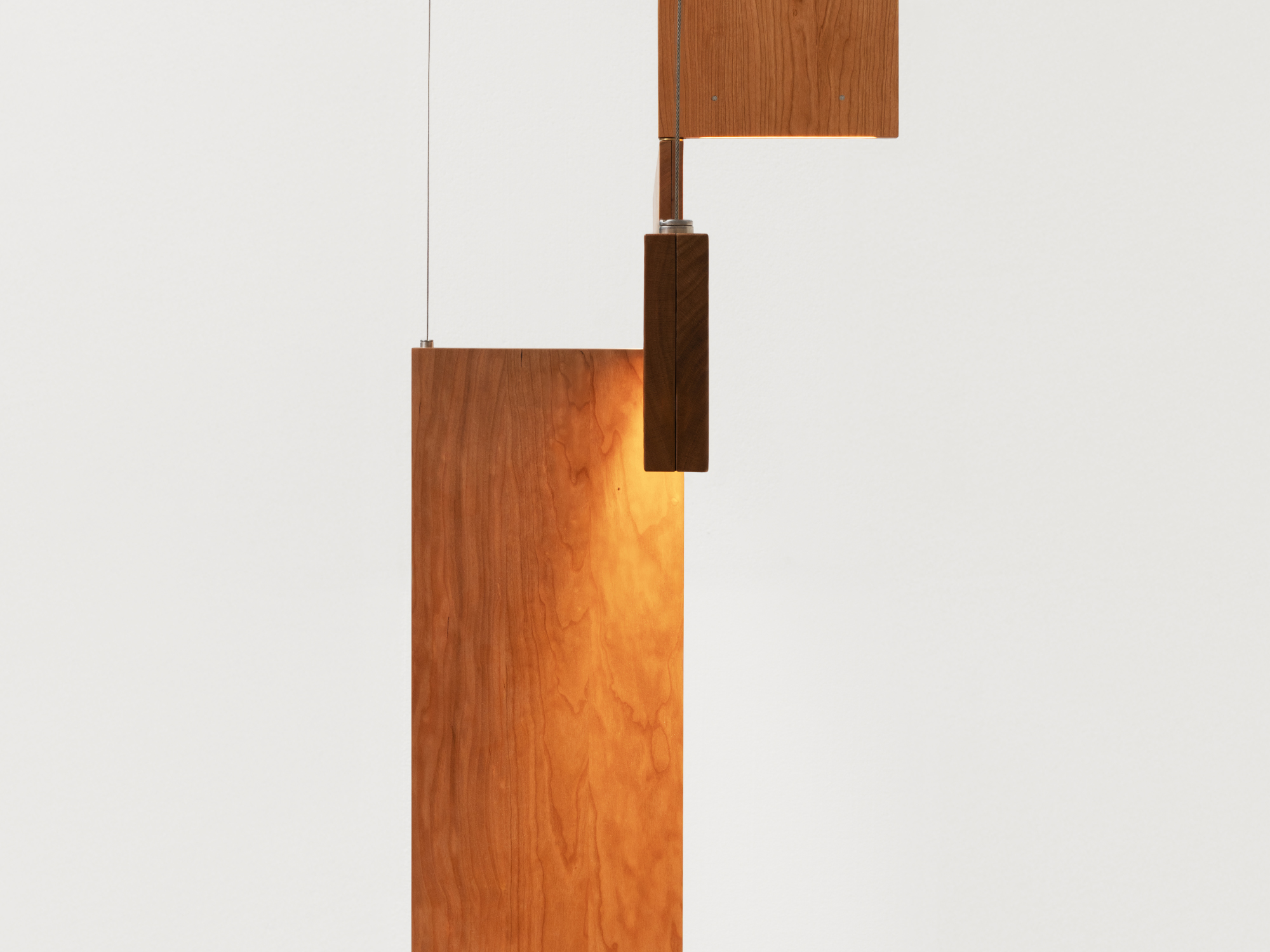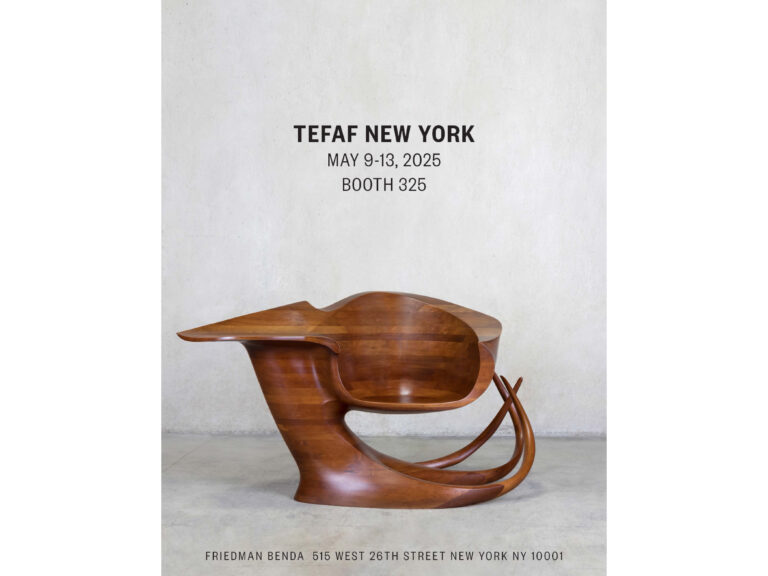by Louis Wustemann
Ask people what bees produce and they will probably list honey, wax, royal jelly, perhaps adding pollinated flowers and a cheering buzz in the summer. Few would think of propolis, also known as “bee glue”, though it was prized by the ancient Egyptians for mummification and by Russian clinics in the second world war to treat tuberculosis.
For designer Marlène Huissoud, the resin made of saliva, wax and tree sap that honey bees secrete to seal gaps in hives is a primary material, at the centre of her sculpted exploration of our relationship with, and exploitation of, insects.
Huissoud was familiar with propolis as a child in the French Alps; her father owned 600 hives, having pursued a “punk vision” to become a beekeeper in the 1970s. But the pale gold substance she saw scraped from the edges of honey frames was sold only for its supposed antiviral properties.
She rediscovered the resin in 2014 while cataloguing insect byproducts and their properties for a masters degree in Material Futures at London’s Central Saint Martins art college. The course pushes students to take the broadest view of what might serve as product ingredients in a world over-reliant on ones derived from minerals, hydrocarbons and ruminant animals.
Specifically, Huissoud became fascinated by the qualities of the propolis produced by bees in the rubber plantations of Brazil. The tree gum the insects ingest gives the resin an unusual plasticity and, once the impurities are boiled off, a glossy black finish.
“I was intrigued by the artificial look of it,” she says. “It has many of the same qualities as glass but can be manipulated at a tenth of the temperature.”
She started working the material — for which the Brazilian beekeepers were glad to find a market, she says — into irregular cylinders for a collection titled From Insects.
Those taller propolis pieces, made with an adapted furnace and basic glassblowing techniques, resemble vases and her recent larger timber-framed objects have cavities and doors suggesting cupboards, but Huissoud is loath to pin them down: “They are somewhere between functional pieces and sculpture.”
However you classify them, it is hard to deny their visual impact. Despite its glossy surface, black propolis seems to drink light and Huissoud’s creations draw the eye in the most cluttered room. “It’s like living with a person, they have a presence,” she says.
Then there is the scent. “People see it at exhibitions and they think it’s glass or ceramic,” she says. “It’s the smell that tells them [it’s not].”
An aroma that mixes notes of honey and beeswax diffuses from the pieces in her Paris studio. She says the scent persists for years and that in the summer when she is shaping hot propolis it registers with passers-by on the street 50 metres away.
Her first pieces were sculpted in the bee resin alone, but the tendency among observers to mistake it for glass led her to combine the two. She scavenged black offcuts from a manufacturer of glazed doors, chopped them down into irregular triangles and framed them with propolis bars. These inscrutable objects resemble three-dimensional stained-glass windows in monochrome.
Before moving to London to study design, Huissoud had graduated in fine art at the École Nationale Supérieure des Beaux-Arts in Lyon. Her graphic work on paper and cloth was made up of thousands of tiny pen strokes.
That painstaking quality in the making is carried over into the hexagonal marks — echoing the shape of honeycomb cells — that she impresses in the surface of the vase-like vessels. (“I use an Allen key from Ikea for that.”)
She relishes the meditative aspect of these repetitive tasks. “There is no rushing it,” she says. “Some of my assistants can’t do it; it’s too intense for them.”
Propolis is not superabundant; the average hive yields around 60 grammes a year — some must be left for the bees’ own repair work.
That scarcity and a desire to craft larger objects led Huissoud to her second signature insect material, Bombyx mori (silkworm) cocoons. The hollow silk capsules, about 2cm long, are spun by the larvae for inhabitation while they metamorphose into moths.
She was fascinated by the lightness and strength of the cocoons; each is made up of a silk filament up to 1,300 metres long. Keen to do no harm she found a Japanese supplier of “peace silk”, which harvests only vacated cocoons rather than boiling the larvae alive inside.
For the larger cupboard-like sculptures, which resemble insect nests on legs, she covers oak frames with propolis. The cocoons are embedded in this base and covered with more resin.
Other experiments include placing the white cocoons over LED bulbs in a black propolis base and varnishing them with clear damar resin tapped from trees in India, so the illuminated silk cases glow against the black background. She has also used the cocoons in moulds to cast table and stool forms in metal, with the help of south London foundry, London Bronze Casting.
Huissoud’s work is a regular feature at design festivals and is part of the current Factory of Life exhibition at the Pompidou Centre in Paris and Design by Time at the Pratt Manhattan Gallery in New York.
Her latest project is a public commission for an installation on a building in Annecy, close to where she grew up. She wants to replicate the “insect hotels” made of small tubes that are the stuff of elementary school projects, “but on a huge scale, four to five metres tall”.
She has been approached by design houses to create simpler pieces in propolis for higher-volume production — she makes only eight of the larger pieces a year — but she will not break faith with the slow methods that produce objects whose forms appear as organic as their materials: “I want to keep it at this scale.”
The work is not just about making striking objects to own, she says; she is out to make people more conscious of the insects that surround them. She is now looking through her library of insect materials to see what other secretions she could craft, “perhaps from ants or termites”. “Why would I want to use normal materials?” She asks. “I am becoming more radical with the years.”
